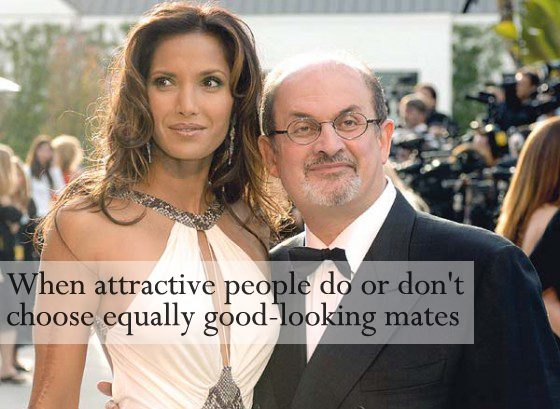
Have you ever found yourself staring at a seemingly mismatched couple – one more attractive than the other – and wondered if there will always be a winner or loser in a relationship? That fat sweaty man with nose hairs protruding somehow has a model wife with legs that go on endlessly. What about that pudgy woman who’s barely tall enough to touch her husband’s handsome and chiseled face?
According to a new study from Northwestern University, partners who become romantically involved soon after meeting tend to be more similar in physical attractiveness than partners who get together after knowing each other for a while.
The results revealed that the longer the romantic partners had known each other before dating, the less likely they were to be matched on attractiveness, just as the researchers hypothesized. For example, the pairing of an unattractive woman with an attractive man was more likely to emerge if the partners had known one another for many months prior to dating.
So what does this really mean?
If you end up hooking-up with someone or start dating soon after you meet, physical attractiveness appears to be a major factor in determining such decisions, and you end up with somebody who’s about as attractive as you are. In contrast, if you know the person for a while before you start dating – or if you’re friends first – physical attractiveness appears to be much less important, and couples are less likely to be similar to their spouse on the dimension of looks.
According to researchers, this pairing pattern could be a result from a competition-based perspective, “An individual’s success in the mating “market” is limited by his or her own desirability. People who are physically attractive tend to be seen as very desirable and are, therefore, better able to win over highly desirable partners themselves.”
Journal Source
Northwestern University. “When attractive people do or don’t choose equally good-looking mates.” ScienceDaily. ScienceDaily, 13 July 2015.
